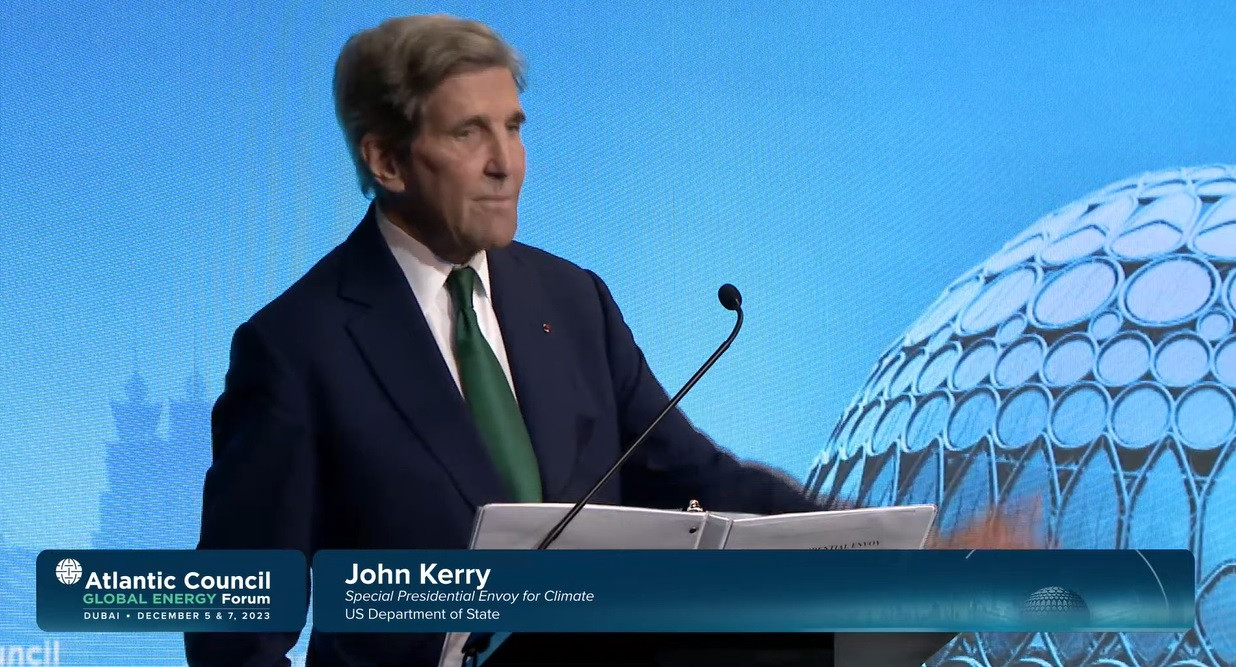US unveils global nuclear fusion plan at COP28, even as Japan-EU reactor comes online
"We are edging ever-closer to a fusion-powered reality. And at the same time, yes, significant scientific and engineering challenges exist. Careful thought and thoughtful policy is going to be critical to navigate this."
- John Kerry at a COP28 event in Dubai
The US launched an international plan to develop nuclear fusion, with US climate envoy John Kerry announcing that the technology could become a vital tool in the fight against climate change and enhance global transition to clean energy.
"We are edging ever-closer to a fusion-powered reality. And at the same time, yes, significant scientific and engineering challenges exist," Kerry told a COP28 event in Dubai. "Careful thought and thoughtful policy is going to be critical to navigate this."
The American strategy, outlined by Kerry at the Atlantic Council Global Energy Forum, identified five areas for international partnerships: research, the supply chain and future marketplace, regulation, workforce issues and public engagement. Kerry said the US proposal involved 35 nations, and urged countries to come together to "harness the power of fundamental physics and human ingenuity in response to a crisis."
Nuclear fusion, which replicates the process that powers the sun, involves fusing two hydrogen atoms, which creates an atom of helium and generates a lot of energy. The technology remains experimental and has years to go before achieving commercialization comparable to other clean energy technologies such as wind and solar. But fusion breakthroughs in recent times --- last year saw the first net positive nuclear fusion reaction --- have brought countries together to speed up the process and sparked market interest.
Last month, the US and the UK announced a partnership to accelerate development of the technology, with both countries agreeing to increase R&D collaboration, knowledge-sharing and skills development in the area.
Last week, Japan and Europe inaugurated the world's largest fusion reactor at Naka in Japan. In a release, the Europeans also called the device, JT-60SA, "the most powerful experimental device to date".
The six-storey tall JT-60SA is a result of a scientific collaboration agreement between the European Union and Japan dubbed the Broader Approach Agreement, which aims to promote the advancement of know-how in nuclear fusion space. The reactor, estimated to have cost €560 million. Work commenced in 2007 and was completed in 2020 with the end of assembly. Since then, the parties carried out a series of technical improvements, concluding with the first plasma operations undertaken in October this year.
Last week's activation of the tokamak magnet at the device's inauguration drew bigwigs, in a sign of just how important the device was for both parties, and how seriously they were monitoring its progress. The European Commissioner for Energy, Kadri Simson, was present, along with Japan's Minister for Science and Technology, Masahito Moriyama, and Japan's Minister of State for Science and Technology Policy, Sanae Takaichi, in addition to senior politicians, industry representatives, and researchers.
Professor Dennis Whyte, a co-founder of US nuclear fusion startup Commonwealth Fusion Systems, who leads the Plasma Science and Fusion Center at Massachusetts Institute of Technology, said this was the right time to push for the technology.
"If fusion becomes economically competitive, we've solved energy for humanity forever, forever. It's like, of course you go after that," he told the Associated Press in an interview. "The compulsion that's coming both from climate change and from energy security means it sure seems this is the right time to make the big push to get there."






















